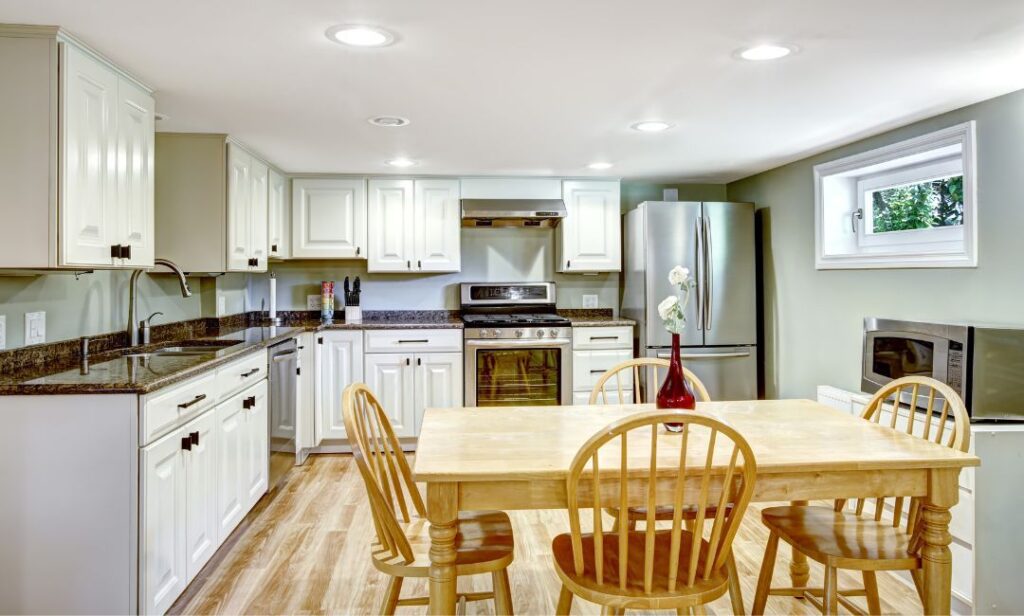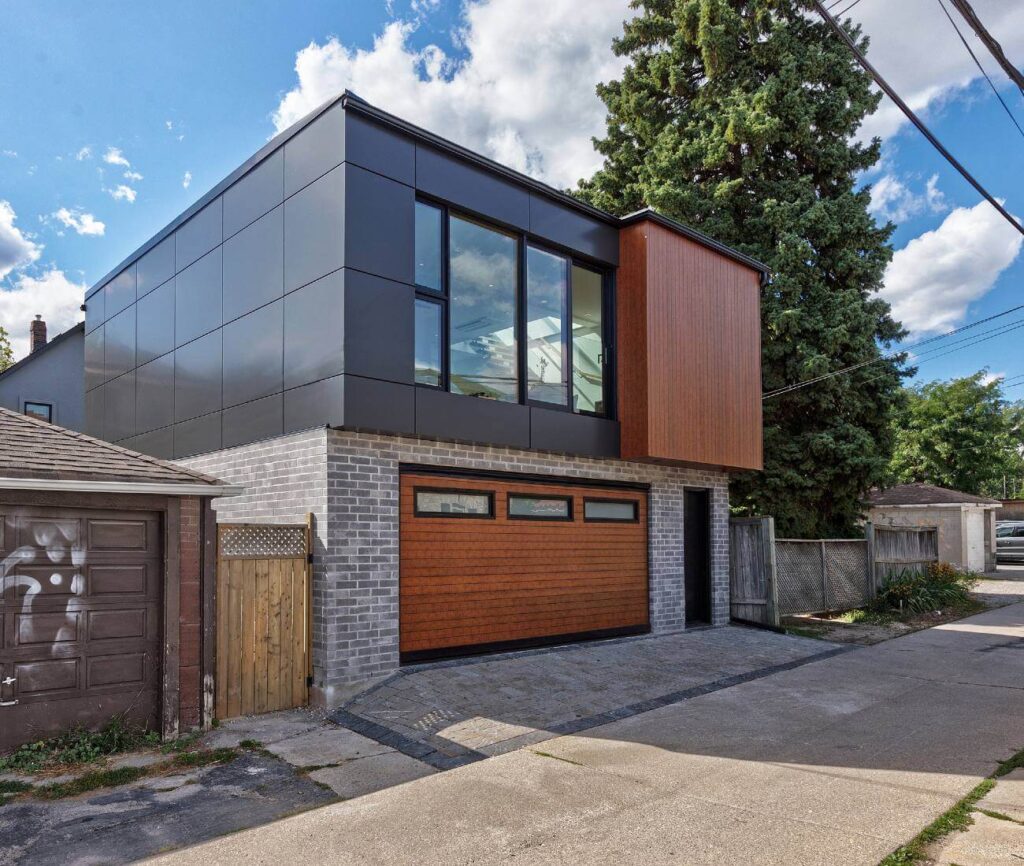A Harmonious Shift: The Rising Trend of Multi-Generational Living in Toronto
03/18/24

Multi-generational living, once considered an unconventional arrangement, is gaining popularity as families are embracing the harmonious shift towards closer, more connected living spaces. This rising trend offers financial benefits and fosters stronger family bonds and a sense of community.
With housing prices reaching new heights, many Toronto families are finding it challenging to afford individual homes for each generation. Instead, they are opting for multi-generational living arrangements where grandparents, parents, and children can coexist together. This arrangement allows for shared expenses, pooling resources, and supporting one another through the highs and lows of life.
The benefits of multi-generational living extend beyond financial advantages. Grandparents get to spend quality time with their grandchildren, providing invaluable life lessons and experiences. Parents find solace in having a trusted support system readily available, and children benefit from the wisdom and guidance of their elders. Furthermore, this trend has given rise to a sense of community within these homes, where everyone contributes to the overall well-being of the household.
- Benefits of Multi-Generational Living
- Multi-Generational Living Statistics in Toronto
- Factors Contributing to the Rise of Multi-Generational Living in Toronto
- Challenges and Solutions for Multi-Generational Living
- Designing a Multi-Generational Living Space
- Financial Considerations for Multi-Generational Living
- Resources and Support for Multi-Generational Living in Toronto
- Embracing the Harmonious Shift towards Multi-Generational Living in Toronto
- Frequently Asked Questions
Benefits of Multi-Generational Living

Multi-generational living has numerous benefits that are driving its popularity in Toronto.
First, it allows families to pool their resources and share expenses, making it more affordable to live in a city with skyrocketing housing prices. By sharing the burden of mortgage payments, utilities, and other household costs, families can save significantly and allocate their funds toward other essential needs.
Additionally, multi-generational living promotes stronger family bonds. Grandparents get to spend quality time with their grandchildren, passing on valuable life lessons and experiences. This intergenerational connection fosters a sense of belonging and emotional support for all family members. Parents also benefit from having a trusted support system readily available, whether it’s for childcare, household tasks, or simply sharing the joys and challenges of everyday life. Children grow up with the wisdom and guidance of their elders, which enriches their development and provides a holistic perspective on life.
Another advantage of multi-generational living is the creation of a vibrant community within these homes. Each family member contributes to the overall well-being of the household, sharing responsibilities and creating a sense of unity. This communal living environment can lead to increased social interactions, shared meals, and the development of lifelong friendships among family members.
Multi-Generational Living Statistics in Toronto
The rising trend of multi-generational living is not just anecdotal; it is backed by statistics. According to a report by Statistics Canada, the number of multi-generational households in Toronto has increased by more than 15% between 2011 and 2021. This trend is expected to continue as families seek affordable housing options and prioritize staying close to their loved ones.
The report also highlights that multi-generational living is more common among specific cultural groups in Toronto. For example, South Asian, Mediterranean, Chinese, and Filipino families have a higher propensity for multi-generational living, influenced by cultural norms that emphasize intergenerational support and respect for elders. These cultural factors and the rising cost of living contribute to the growing prevalence of multi-generational households in Toronto.
Factors Contributing to the Rise of Multi-Generational Living in Toronto

Several factors have contributed to the increasing popularity of multi-generational living in Toronto.
As mentioned earlier, the soaring housing prices have made it difficult for families to afford separate homes for each generation. Multi-generational living offers a practical solution to this problem, allowing families to save money and create a more sustainable living arrangement.
Another factor is the changing dynamics of family structures. With both parents working full-time jobs or odd shift patterns, the need for reliable childcare has become crucial. Grandparents often step in to provide childcare, offering a trusted and cost-effective option for working parents.
Additionally, the aging population in Toronto has led to a greater need for support and companionship among seniors. Multi-generational living provides an opportunity for older adults to age in place while receiving care and assistance from their loved ones.
Challenges and Solutions for Multi-Generational Living
While multi-generational living offers numerous benefits, it also comes with its own set of challenges.
One of the main obstacles is the need for privacy and personal space. Each generation may have different routines, preferences, and ways of living. Finding a balance between togetherness and individuality is essential for the success of multi-generational living. Creating designated areas for each family member and open communication about boundaries and expectations can help address this challenge.
Another potential challenge is the generation gap and differing values and beliefs. Each generation may have different perspectives on various aspects of life, such as parenting styles, career choices, or even cultural traditions. Open and respectful dialogue is crucial in navigating these differences, fostering understanding, and promoting harmony within the household.
Financial considerations are also important to address when embarking on multi-generational living. It is essential to have a clear plan for managing and sharing expenses, such as mortgage payments, utilities, groceries, and other household costs. Creating a budget and setting expectations regarding financial contributions from each family member can help avoid conflicts and ensure a fair distribution of expenses.
Designing a Multi-Generational Living Space

Designing a multi-generational living space requires careful consideration of everyone’s needs and preferences.
Adequate privacy, accessibility, and functionality are key factors to keep in mind. Each generation should have their own private space, whether it’s separate bedrooms, living areas, or even small apartments within the same property.
Incorporating accessibility elements, such as wider doorways, grab bars, and step-free access, can ensure that the space is safe and accessible for all family members, regardless of age or mobility.
Creating shared spaces for family gatherings and activities is also important. A spacious kitchen, dining area, and living room can serve as central hubs for socializing and spending quality time together. Outdoor spaces, such as gardens or patios, can provide additional areas for relaxation and recreation.
Financial Considerations for Multi-Generational Living
When considering multi-generational living, it is important to evaluate the financial implications. While sharing expenses can be advantageous, it is essential to have a clear understanding of everyone’s financial commitments and expectations. Creating a written agreement or contract can help outline the responsibilities and contributions of each family member, ensuring transparency and minimizing potential conflicts.
Families should consider the long-term financial implications of sharing a property. For example, if the property is jointly owned, establish clear guidelines for maintenance and repairs and exit strategies in case someone decides to move out, sell their share, or in the event of sudden death or incapacitation. Seeking professional advice from lawyers or financial advisors can provide valuable insights and help navigate the complexities of multi-generational living.
Resources and Support for Multi-Generational Living in Toronto
Toronto offers a range of resources and support for families embracing multi-generational living. Various community organizations provide workshops, seminars, and support groups to address the unique challenges and opportunities of multi-generational households. These resources offer guidance on communication strategies, conflict resolution, and navigating legal and financial aspects of shared living arrangements.
Real estate professionals specializing in multi-generational living can assist families in finding suitable properties or modifying existing ones to accommodate their needs. They can provide insights into zoning regulations, building codes, and design considerations for multi-generational living.
Embracing the Harmonious Shift towards Multi-Generational Living in Toronto

As Toronto continues to face challenges in the housing market, multi-generational living offers a practical and fulfilling solution for families. The benefits of this arrangement extend beyond financial advantages, fostering stronger family bonds and a sense of community.
By embracing the harmonious shift towards multi-generational living, families in Toronto can create a supportive and interconnected environment that enriches the lives of all generations. With careful planning, open communication, and a willingness to adapt, multi-generational living can be a rewarding and empowering experience for families in the city.
Frequently Asked Questions
What is multi-generational living, and why is it gaining popularity in Toronto?
Multi-generational living is when grandparents, parents, and children live under one roof, sharing expenses and resources. It’s becoming more popular in Toronto due to high housing costs, fostering stronger family bonds, and providing a trusted support system within the family.
What are the financial benefits of multi-generational living in Toronto?
This living arrangement allows families to pool resources and share the financial load of mortgage payments, utilities, and other household costs. It’s a cost-effective way to manage living in a city with soaring housing prices.
How does multi-generational living affect family relationships?
It strengthens family bonds by allowing more quality time between generations, sharing life lessons, and creating a supportive and interconnected environment. This setup promotes emotional support and a sense of belonging among family members.
Are there any statistics on the rise of multi-generational living in Toronto?
Yes, according to Statistics Canada, the number of multi-generational households in Toronto has increased by more than 15% between 2011 and 2021, highlighting a growing trend towards this living arrangement.
Which cultural groups in Toronto are more likely to live in multi-generational households?
Multi-generational living is more common among South Asian, Mediterranean, Chinese, and Filipino families in Toronto, largely due to cultural norms that value intergenerational support and respect for elders.
What challenges might families face with multi-generational living, and how can they overcome them?
Key challenges include maintaining privacy and managing differing values and beliefs. Overcoming these requires creating designated personal spaces, fostering open and respectful communication, and setting clear expectations around financial contributions and household responsibilities.
What considerations are important when designing a multi-generational living space?
Design should prioritize privacy, accessibility, and functionality, with private spaces for each generation and shared spaces for family gatherings. Incorporating elements like wider doorways and step-free access can accommodate all family members’ needs.
What financial considerations should families think about when moving into a multi-generational living arrangement?
Families should discuss and agree on financial commitments, creating a written agreement to outline each member’s responsibilities. Considering long-term financial planning, including maintenance, repairs, and exit strategies, is crucial.
Where can families in Toronto find resources and support for multi-generational living?
Toronto has various community organizations offering workshops, seminars, and support groups, along with real estate professionals who specialize in multi-generational living. These resources provide valuable guidance on navigating the complexities of shared living arrangements.
What makes multi-generational living a fulfilling solution for families in Toronto facing housing market challenges?
Beyond financial savings, multi-generational living enriches families with a sense of community, emotional support, and shared life experiences, making it a practical and rewarding way to tackle Toronto’s housing affordability issues.
Sign Up For Our Newsletter
Looking for more great real estate content? Get it delivered to your inbox with our newsletter!



